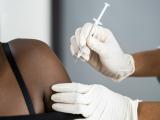Jul 22, 2008 (CIDRAP News) – The Department of Homeland Security (DHS) plans to adopt new automated equipment that will be able to detect dangerous airborne pathogens in major US cities in as little as 4 hours, with a goal of starting deployment in the fall of 2010, DHS officials told Congress last week.
The equipment is part of DHS's BioWatch program, which involves continuous testing of the air in 30 major cities for pathogens such as anthrax. The program was launched in the wake of the anthrax letter attacks of 2001, which killed five people and sickened 17 others.
Currently, filters from collection equipment are removed manually, taken to a laboratory, and tested, a process that takes from 10 to 34 hours, officials told the House Homeland Security Subcommittee on Emerging Threats, Cybersecurity, and Science and Technology. The new equipment will collect and test air samples automatically, reducing detection time to between 4 and 6 hours, officials said. The new system is also designed to test for more pathogens than the existing system.
The time savings "will potentially save thousands of lives each day an attack, such as anthrax, is detected ahead of human syndromic surveillance and other public health indicators," Robert Hooks, deputy assistant secretary for weapons of mass destruction and biodefense in DHS's Office of Health Affairs (OHA), told the subcommittee in written testimony.
However, development of the automated sampling equipment is about a year behind the original schedule, said William O. Jenkins Jr., director of homeland security and justice issues for the Government Accountability Office (GAO), Congress's investigative arm.
"Operational testing and evaluation of this technology is scheduled for April 2009, about a year later than initially planned," Jenkins reported in written testimony. The reason for the delay is that DHS's OHA revised the functional requirements for the equipment in January, about 4 months before the science and technology division was scheduled to complete the "Generation 3.0 prototype detector," he said.
Under questioning by a subcommittee member, Hooks said the original schedule for setting up the new system was too optimistic. "Over a period of time as we managed the program, we looked optimistically at deploying the equipment earlier than was actually realistic," he said. (A recording of the hearing is available from the Homeland Security Committee Web site.)
In response to questions about DHS's ability to start operational testing of the new detectors in April 2009, BioWatch Director Dr. Jeffrey Stiefel said DHS expects to meet that schedule, but stressed that the equipment must be tested thoroughly because of the high stakes involved.
"We can't afford to put a system out there that's going to make a mistake, because the [response] actions of that mistake are tremendous," he said.
Hooks said the automated equipment will be tested at two BioWatch sites for 3 to 6 months. If DHS then decides to proceed with the system, initial deployment will begin in the fall of 2010.
Jenkins said plans call for the new detectors to replace all the current detectors by 2013.
Interim system for indoor sites
In the face of that time lag, DHS is working on setting up an interim automated system to provide fast detection of pathogens in certain high-risk indoor locations, DHS officials told the subcommittee. The interim system, called Generation 2.5, is designed to identify pathogens in 4 to 6 hours, but it is more costly than the Generation 3 equipment and will not test for as many different agents.
"This interim system will be deployed in high-consequence indoor environments to provide coverage of the highest risk facilities before the Generation 3 system will be ready for deployment," Hooks said in his written statement.
Stiefel told the subcommittee in response to questions, "We are operational in New York City in a couple of venues with Generation 2.5."
Jenkins, in his written statement, said DHS officials told him they plan to start operational tests of the Generation 2.5 detectors in November. If they pass the tests, the agency plans to buy more than 100 of them, at a cost of $120,000 each, plus annual maintenance costs of $65,000 to $72,000, he reported.
The Generation 3 detectors are expected to cost considerably less: $80,000 to 90,000, with yearly operation and maintenance costs of $12,000 to $41,000, Jenkins said.
Although the new equipment will be used in some indoor locations, Jenkins said, "No procedural guidance exists for responding to positive results from detectors placed indoors. According to OHA officials, they plan to develop this guidance by October 2008 and apply it to all future BioWatch detectors deployed indoors."
No false-positives
In other comments at the hearing, Hooks said the BioWatch program has analyzed more than 7 million samples without generating a single false-positive result since its inception in 2003.
The program has detected "dozens" of pathogens of concern, or "BioWatch actionable results," over the years, Hooks reported in his written statement. "These valid laboratory findings have been attributed in all cases to naturally occurring environmental sources," he said.
See also:
Statement by the GAO's William O. Jenkins Jr. to the House subcommittee
http://www.gao.gov/new.items/d08960t.pdf



















